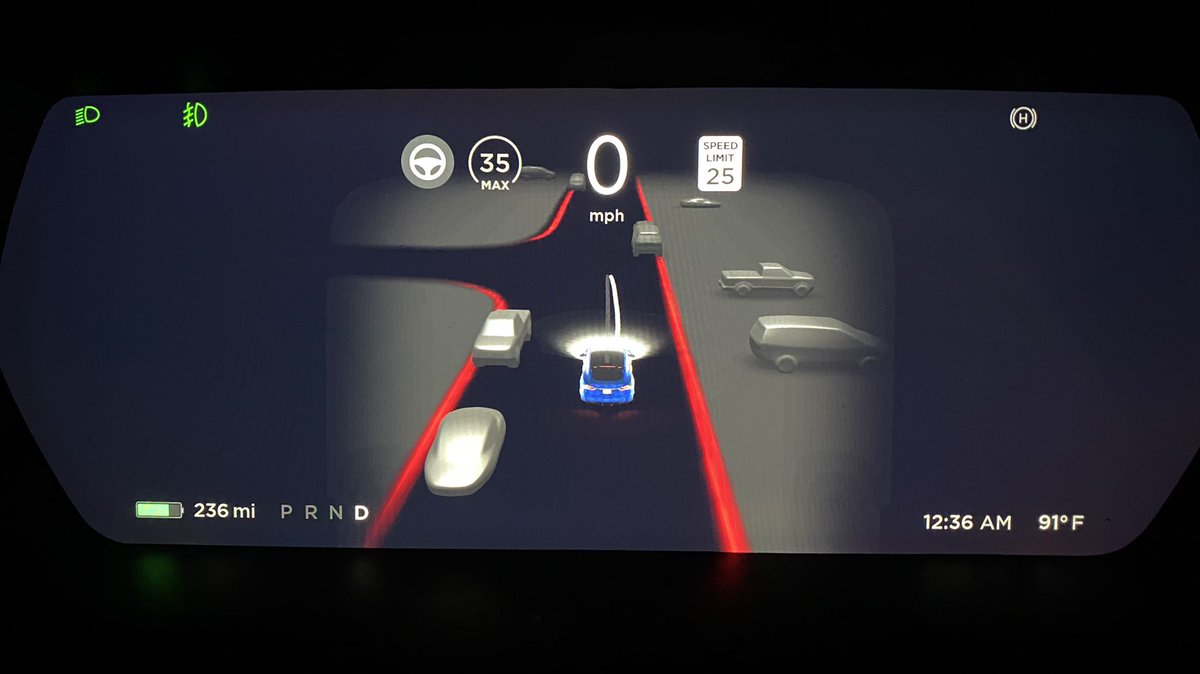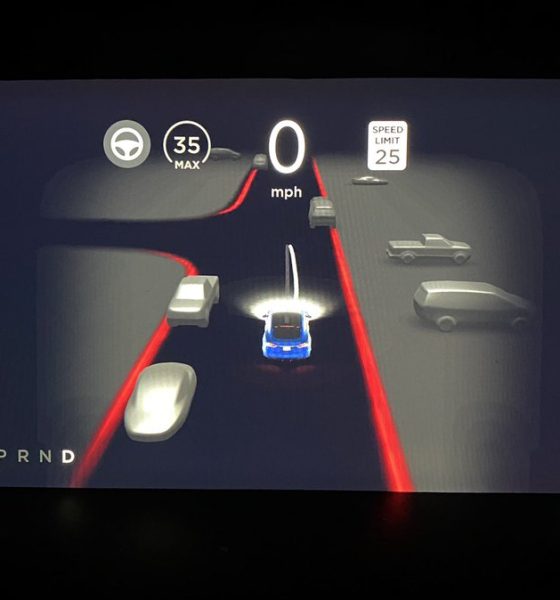Consumer advocate group Consumer Reports (CR) has issued a sharp rebuke of Tesla’s Full Self-Driving Beta V9, which began its initial rollout earlier this month. CR highlighted FSD Beta V9’s capabilities and lack of safeguards as its main point of criticism for the advanced driver-assist system.
Tesla FSD Beta V9 adopts the company’s pure vision approach, which uses a camera-based Autopilot model. Tesla’s decision to adopt pure vision as opposed to its previous camera+radar approach was quite controversial, though initial reviews from some FSD Beta users have noted that their vehicles have been behaving more confidently with FSD Beta V9. Elon Musk, for his part, has maintained that FSD Beta V9 users must exercise utmost caution when using the system.
Consumer Reports’ Tesla Model Y does not have FSD Beta V9 software, and thus, the company is yet to experience the advanced driver-assist system firsthand, but Jake Fisher, senior director of CR’s Auto Test Center, noted that videos of FSD Beta V9 in action do not inspire confidence. “Videos of FSD Beta 9 in action don’t show a system that makes driving safer or even less stressful. Consumers are simply paying to be test engineers for developing technology without adequate safety protection,” he said.
The magazine pointed to videos uploaded by FSD Beta V9 tester AI Addict, whose YouTube uploads showed instances when the advanced driver-assist system made mistakes and required manual interventions. Missy Cummings, an automation expert who is director of the Humans and Autonomy Laboratory at Duke University, noted that FSD Beta V9 still has fundamental problems.
“It’s hard to know just by watching these videos what the exact problem is, but just watching the videos it’s clear (that) it’s having an object detection and/or classification problem. I’m not going to rule out that at some point in the future that’s a possible event. But are they there now? No. Are they even close? No,” she said.
Selika Josiah Talbott, a professor at the American University School of Public Affairs in Washington, D.C., is more critical of the system, stating that the videos she has seen of FSD Beta V9 show that the advanced driver-assist system behaves “almost like a drunk driver” in the way that it struggles to stay between lane lines. “It’s meandering to the left; it’s meandering to the right. While its right-hand turns appear to be fairly solid, the left-hand turns are almost wild,” she said.
Despite Tesla’s rollout of a camera-based driver monitoring system to its vehicles, Fisher argued that the EV maker still needs to monitor its drivers in real-time to ensure that FSD Beta V9 is being used properly. “Tesla just asking people to pay attention isn’t enough—the system needs to make sure people are engaged when the system is operational. We already know that testing developing self-driving systems without adequate driver support can—and will—end in fatalities,” he said.
It should be noted that FSD Beta V9’s current iteration is not in wide release yet, and it has only been rolled out to the company’s select group of FSD Beta testers. So far, however, tests of the system in action seem encouraging. While manual interventions still happen from time to time, FSD Beta V9 does seem like a step forward from its previous iterations. This does not mean that Tesla’s driver-assist system is ready to go hands-free, of course, but it’s a solid step forward. Needless to say, there’s a good chance that improvements would be made to FSD Beta V9 before it gets a wider release.
Consumer Reports’ full article on Tesla’s FSD Beta V9 could be accessed here.
Watch AI Addict’s FSD Beta V9 video below.
Don’t hesitate to contact us with news tips. Just send a message to tips@teslarati.com to give us a heads up.

Elon Musk
Elon Musk’s X will start using a Tesla-like software update strategy
The initiative seems designed to accelerate updates to the social media platform, while maintaining maximum transparency.

Elon Musk’s social media platform X will adopt a Tesla-esque approach to software updates for its algorithm.
The initiative seems designed to accelerate updates to the social media platform, while maintaining maximum transparency.
X’s updates to its updates
As per Musk in a post on X, the social media company will be making a new algorithm to determine what organic and advertising posts are recommended to users. These updates would then be repeated every four weeks.
“We will make the new 𝕏 algorithm, including all code used to determine what organic and advertising posts are recommended to users, open source in 7 days. This will be repeated every 4 weeks, with comprehensive developer notes, to help you understand what changed,” Musk wrote in his post.
The initiative somewhat mirrors Tesla’s over-the-air update model, where vehicle software is regularly refined and pushed to users with detailed release notes. This should allow users to better understand the details of X’s every update and foster a healthy feedback loop for the social media platform.
xAI and X
X, formerly Twitter, has been acquired by Elon Musk’s artificial intelligence startup, xAI last year. Since then, xAI has seen a rapid rise in valuation. Following the company’s the company’s upsized $20 billion Series E funding round, estimates now suggest that xAI is worth tens about $230 to $235 billion. That’s several times larger than Tesla when Elon Musk received his controversial 2018 CEO Performance Award.
As per xAI, the Series E funding round attracted a diverse group of investors, including Valor Equity Partners, Stepstone Group, Fidelity Management & Research Company, Qatar Investment Authority, MGX, and Baron Capital Group, among others. Strategic partners NVIDIA and Cisco Investments also continued support for building the world’s largest GPU clusters.
News
Tesla FSD Supervised wins MotorTrend’s Best Driver Assistance Award
The decision marks a notable reversal for the publication from prior years, with judges citing major real-world improvements that pushed Tesla’s latest FSD software ahead of every competing ADAS system.

Tesla’s Full Self-Driving (Supervised) system has been named the best driver-assistance technology on the market, earning top honors at the 2026 MotorTrend Best Tech Awards.
The decision marks a notable reversal for the publication from prior years, with judges citing major real-world improvements that pushed Tesla’s latest FSD software ahead of every competing ADAS system. And it wasn’t even close.
MotorTrend reverses course
MotorTrend awarded Tesla FSD (Supervised) its 2026 Best Tech Driver Assistance title after extensive testing of the latest v14 software. The publication acknowledged that it had previously criticized earlier versions of FSD for erratic behavior and near-miss incidents, ultimately favoring rivals such as GM’s Super Cruise in earlier evaluations.
According to MotorTrend, the newest iteration of FSD resolved many of those shortcomings. Testers said v14 showed far smoother behavior in complex urban scenarios, including unprotected left turns, traffic circles, emergency vehicles, and dense city streets. While the system still requires constant driver supervision, judges concluded that no other advanced driver-assistance system currently matches its breadth of capability.
Unlike rival systems that rely on combinations of cameras, radar, lidar, and mapped highways, Tesla’s FSD operates using a camera-only approach and is capable of driving on city streets, rural roads, and freeways. MotorTrend stated that pure utility, the ability to handle nearly all road types, ultimately separated FSD from competitors like Ford BlueCruise, GM Super Cruise, and BMW’s Highway Assistant.
High cost and high capability
MotorTrend also addressed FSD’s pricing, which remains significantly higher than rival systems. Tesla currently charges $8,000 for a one-time purchase or $99 per month for a subscription, compared with far lower upfront and subscription costs from other automakers. The publication noted that the premium is justified given FSD’s unmatched scope and continuous software evolution.
Safety remained a central focus of the evaluation. While testers reported collision-free operation over thousands of miles, they noted ongoing concerns around FSD’s configurable driving modes, including options that allow aggressive driving and speeds beyond posted limits. MotorTrend emphasized that, like all Level 2 systems, FSD still depends on a fully attentive human driver at all times.
Despite those caveats, the publication concluded that Tesla’s rapid software progress fundamentally reshaped the competitive landscape. For drivers seeking the most capable hands-on driver-assistance system available today, MotorTrend concluded Tesla FSD (Supervised) now stands alone at the top.
News
Elon Musk’s Grokipedia surges to 5.6M articles, almost 79% of English Wikipedia
The explosive growth marks a major milestone for the AI-powered online encyclopedia, which was launched by Elon Musk’s xAI just months ago.

Elon Musk’s Grokipedia has grown to an impressive 5,615,201 articles as of today, closing in on 79% of the English Wikipedia’s current total of 7,119,376 articles.
The explosive growth marks a major milestone for the AI-powered online encyclopedia, which was launched by Elon Musk’s xAI just months ago. Needless to say, it would only be a matter of time before Grokipedia exceeds English Wikipedia in sheer volume.
Grokipedia’s rapid growth
xAI’s vision for Grokipedia emphasizes neutrality, while Grok’s reasoning capabilities allow for fast drafting and fact-checking. When Elon Musk announced the initiative in late September 2025, he noted that Grokipedia would be an improvement to Wikipedia because it would be designed to avoid bias.
At the time, Musk noted that Grokipedia “is a necessary step towards the xAI goal of understanding the Universe.”
Grokipedia was launched in late October, and while xAI was careful to list it only as Version 0.1 at the time, the online encyclopedia immediately earned praise. Wikipedia co-founder Larry Sanger highlighted the project’s innovative approach, noting how it leverages AI to fill knowledge gaps and enable rapid updates. Netizens also observed how Grokipedia tends to present articles in a more objective manner compared to Wikipedia, which is edited by humans.
Elon Musk’s ambitious plans
With 5,615,201 total articles, Grokipedia has now grown to almost 79% of English Wikipedia’s article base. This is incredibly quick, though Grokipedia remains text-only for now. xAI, for its part, has now updated the online encyclopedia’s iteration to v0.2.
Elon Musk has shared bold ideas for Grokipedia, including sending a record of the entire knowledge base to space as part of xAI’s mission to preserve and expand human understanding. At some point, Musk stated that Grokipedia will be renamed to Encyclopedia Galactica, and it will be sent to the cosmos.
“When Grokipedia is good enough (long way to go), we will change the name to Encyclopedia Galactica. It will be an open source distillation of all knowledge, including audio, images and video. Join xAI to help build the sci-fi version of the Library of Alexandria!” Musk wrote, adding in a later post that “Copies will be etched in stone and sent to the Moon, Mars and beyond. This time, it will not be lost.”










